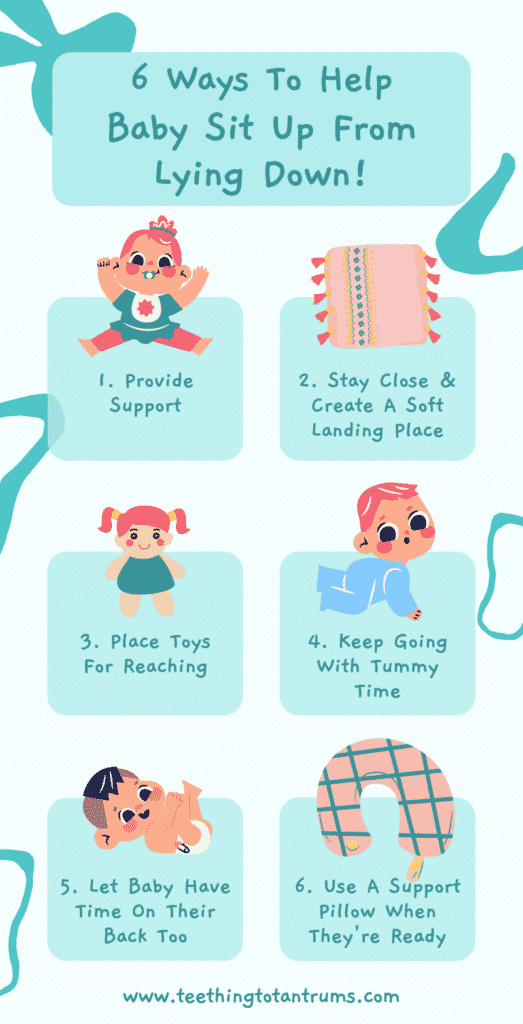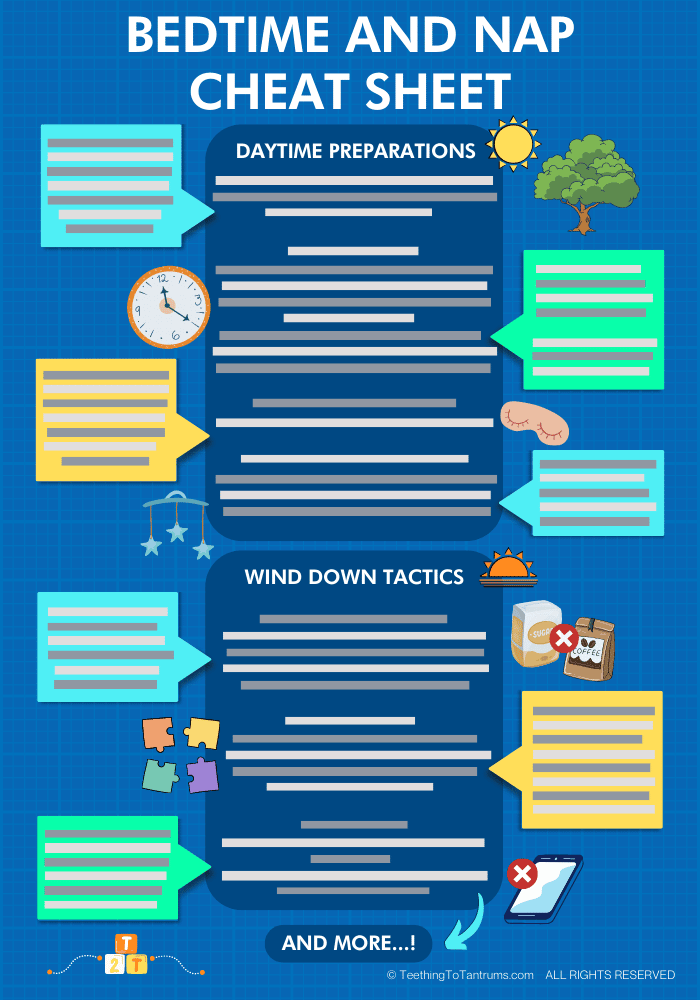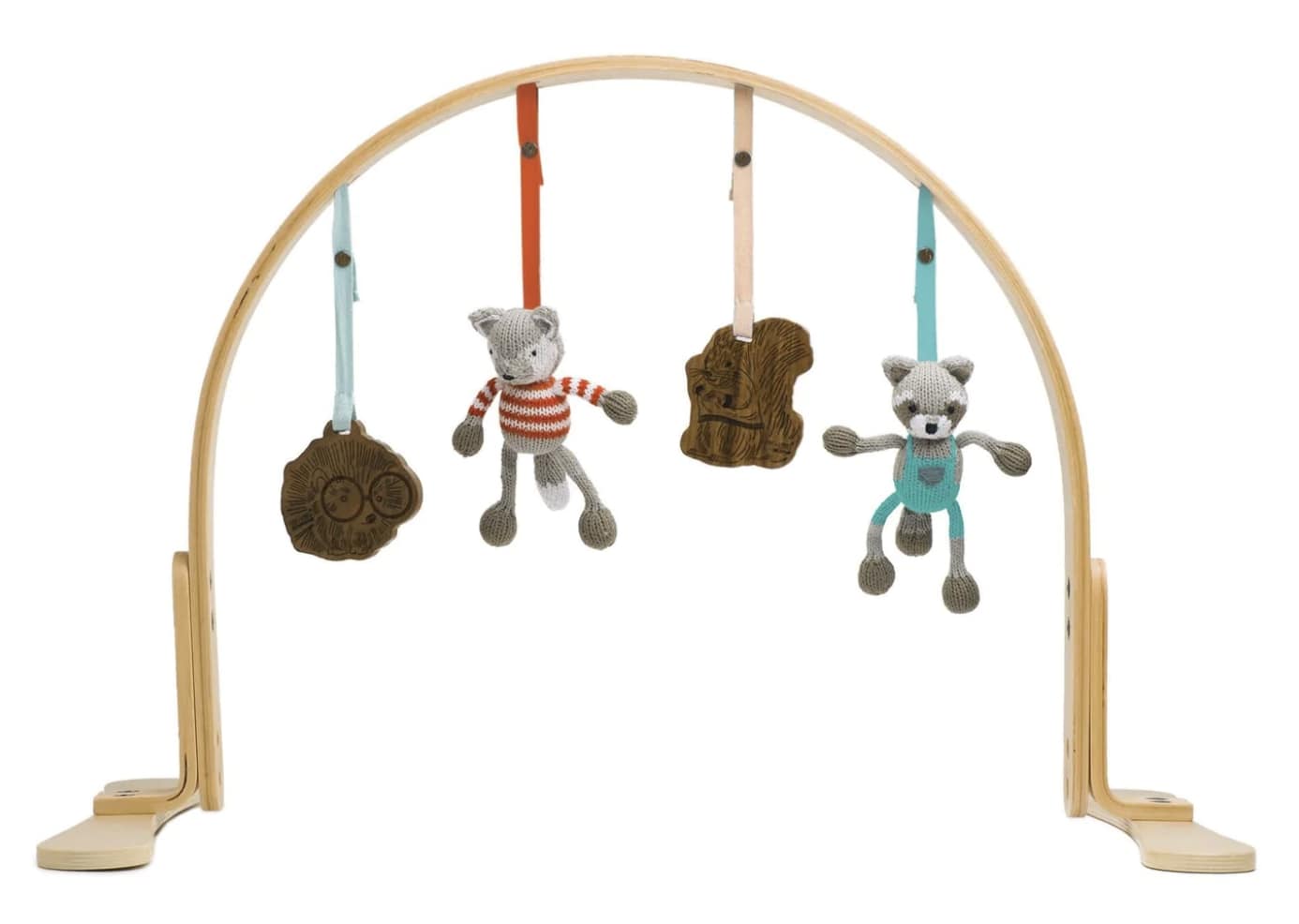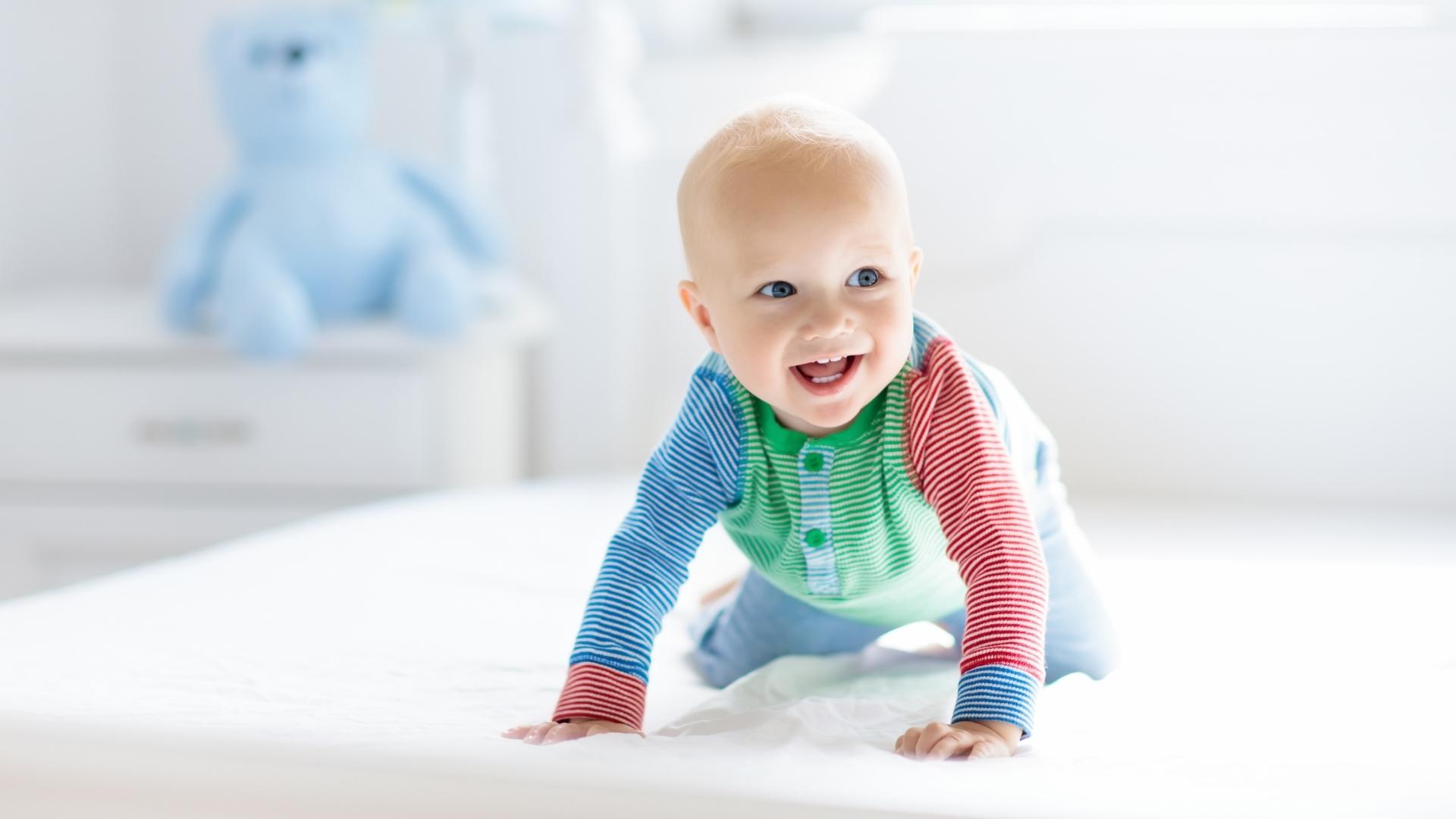As parents, we all eagerly anticipate the moment when our little ones reach a new developmental milestone. One of the most important gross motor skills they’ll need to master is sitting up from lying down.
But when exactly do babies sit up from lying down? And what can we do to support them in achieving this exciting milestone?

Table of Contents
Key Takeaways
- Babies typically start sitting up independently between 4-7 months old, but every baby develops at their own pace.
- Babies will progress to sitting up from lying down between the ages of 7 and 11 months old. However, some babies may skip this milestone.
- Encouraging your baby to move and explore their environment is key to helping them develop the muscle strength and coordination needed to sit up on their own.
When Do Babies Sit Up From Lying Down?
Babies will start to sit up from lying down from as young as 7 months of age… However, the majority of babies will reach this physical development milestone by 11 months of age.
When Do Babies Sit Up On Their Own?
Babies sit up on their own between the ages of 4 and 7 months old. Usually, once they have strong head control, around 6 months of age. Once they are able to sit up independently your baby will learn how to sit up from lying down.
How To Help Your Baby Sit Up From Lying Down
Your baby’s ability to sit up creates opportunities to learn a whole new range of movements, such as lying down from sitting, balancing, crawling, and eventually walking.
Knowing WHEN do babies sit up from lying down and HOW do babies learn to sit up from lying down are two important factors in establishing this developmental skill.
Learning to sit takes patience and practice and your little one may topple a few times in the process.
But, you can encourage your baby to sit up from lying down by doing the following:

1. Provide Support For Baby
The best way you can help your baby learn to sit up from lying down is to prop them up in the corner of a sofa or between your legs and place a toy close by.
This position allows your baby to practice the tripod sit by putting out a hand to support themselves and to push themselves back up into the sitting position.
2. Stay Close And Create A Soft Landing Place
Even if your baby is well supported, you MUST keep an eye on them at all times when they are learning to sit and ensure that they have a soft place to fall by surrounding them with pillows or cushions.
REMEMBER: Babies can easily get spooked if they take an unexpected tumble and this can slow their development of learning to sit independently as they will be hesitant to want to stay in that position again in case they fall again.
3. Place Toys For Reaching
Start by placing toys close enough for your little one to reach easily then gradually move them a little further away and to the sides to encourage them to turn from side to side. Sensory rattles and soft toys are wonderful as they usually make noise and are brightly colored to capture baby’s attention.
Babies love rattles and if you only buy one then this one is a great choice. This multisensory teething rattle has so much to offer in one package and I will guarantee that your little one will love exploring this great little toy.
NOTE: To learn more about how to teach baby to roll over, check out my post: When Do Babies Roll Over?
4. Don’t Stop Tummy Time
Just because your little one is on the road to independent sitting does NOT mean that tummy time can be reduced. Time spent on baby’s tummy is still hugely important and will help with crawling and being able to move from the lying-down position on their front, up to sitting.
If your baby is struggling with tummy time, check out my post Baby Hates Tummy Time to learn how to navigate this tricky situation.
5. Have Time On Their Backs Too
Time spent on their backs is important too, especially when under play gyms where they have to reach for dangly toys. This strengthens their upper body and arms which are vital to helping baby sit up from lying down.
There are so many play gyms out there and lots of them are great but I was especially impressed by this one from Finn and Emma. This company do a great range of toys and baby gear and I often feel that for small babies less is more so really like the simple classy design of this play gym.
6. Use A Support Or Boppy Pillow… When Baby Is Ready
If you are going to use a support or Boppy Pillow you should ensure that your baby is developmentally ready to do so.
Putting your baby in a sitting position for long periods of time before they are ready is not good for their development. However, once they have the strength to use these support seats, used under supervision, boppy pillows can be perfect for sitting practice and help develop the muscles needed for your baby to sit up from lying down.
TOP TIP: Never leave your baby unattended when they are learning to sit, especially if you have them propped up on soft cushions or pillows that they may fall into.
What Muscles Need To Be Developed For Baby To Sit Up From Lying Down?
The main muscles that need to be developed for your baby to be able to sit up from lying down are:
- Neck,
- Shoulders,
- The spinal column (back),
- Chest,
- And arms.
Looking to get your little one to sleep quickly and effortlessly? Check out my Bedtime and Nap Cheat Sheet and master the art of making daytime naps and bedtimes as seamless as possible.
A bedtime & nap cheat sheet so good your little one will ask you to put them to bed...
Laura Williams "This is a life saver! I'm so glad I downloaded your bedtime & nap cheat sheet. My little one actually asked me to put him to bed last night! Unbelievable! Thank you so much!"
Click Here For The FREE Cheat Sheet
4 Exercises To Help Baby Learn To Sit Up From Lying Down
Knowing when do babies sit up from lying down can seem like a daunting task to teach your baby… but here are 4 fantastic activities to get you started developing the appropriate muscles required to achieve this action:
- Tummy time. Tummy time is a very important exercise for young babies as it helps to develop the muscles needed to sit up, roll over, and eventually start crawling and walking. Whilst also helping babies refine their motor skills and preventing Flat Head Syndrome (positional plagiocephaly).
- Toy and rattle reaching. Toy reaching is a fantastic activity to refine your baby’s balancing skills and improve the muscle strength in their upper torso, core, and arms as they lean, reach, and grab toys around them. Beautifully simple, your baby will be enticed to reach toys beyond their grasp with noise, rattles, and lots of encouragement from you.
- Mock sitting. Mock sitting is a super simple but very effective activity to help your baby learn to sit up by themselves. Supported by your body, baby will refine their balancing skills and back muscle strength required to sit up independently in no time. This is also a wonderful bonding activity for you both.
- Rolling over. Helping baby learn to roll over (either on the floor or on you, as shown in the video below) is a great activity to strengthen their core, back, and neck muscles that are required to sit up from lying down. Babies will also love the freedom of movement as they begin to explore their bodies and the world around them from different perspectives.
When To Worry If Baby Is Not Sitting Up
If your baby is not showing signs of sitting independently by 12 months old, you should consult a medical professional to identify or rule out any gross motor skill delays.
However, as with all things baby development-related, there are no hard and fast rules as to when they achieve certain milestones.
Ideally, most babies will have learned to sit by the time they are 6 months old and be able to sit up from lying down by 9 months old.

Frequently Asked Questions About When Do Babies Sit Up
Looking for more information about when babies sit up, in particular, when babies sit up from lying down? Look no further! Here are the most commonly asked questions, answered just for you.
Q: When can babies sit up from lying flat?
A: Babies will start sitting up from lying flat on their backs between 7 and 9 months of age. However, every baby is different and some may start sitting up earlier or later.
Q: Do babies crawl or sit up first?
A: Most babies will learn to sit up before they learn to crawl, but as I always say, every baby is different and there is no set order in which they will reach these milestones. Some babies may start crawling before they can sit up on their own, while others will skip crawling altogether and go straight from sitting to walking.
Q: Is it normal for a 12-month-old to not sit up?
A: It’s not normal for a 12-month-old to be able to sit up. While most 12-month-olds are able to sit up on their own, it is not uncommon for some babies to take longer to reach this milestone. However, if your baby is showing no signs of sitting, propping themselves up or self-supporting by this age, I would recommend talking to your pediatrician to see if there are any developmental delays occurring.
Q: Is holding an infant in a sitting position bad?
A: Holding a baby in a sitting position is not inherently bad, but it is important to make sure that your infant is well-supported and not in a position that could cause them discomfort or harm for extended amounts of time. It is also important to allow your baby plenty of tummy time to help them develop their upper body and neck muscles and reach their development potential.
Q: Do babies go from sitting to crawling?
A: Yes, babies will sit up before they crawl. Crawling requires core strength, coordination, and a sense of balance that is developed through your baby’s practice of sitting unaided.
Q: How does lying on their back or front affect a baby learning to sit up?
A: As I mentioned earlier, lying baby on their back and front are both important activities to include in your baby’s day.
These positions help babies learn to sit independently by strengthening the muscles in their neck, shoulders, upper body, chest and arms – all of which need to be strong in order for your child to sit on their own.
Q: When do babies sit up and crawl?
A: Babies will start to sit up around 5 months of age. Babies will learn to crawl between the ages of 7 and 12 months old.
Need More Parenting Help?
- Download our FREE Bedtime & Nap Sleep Cheat Sheet. It’s a free, easy-to-use and proven formula designed for parents of 0-5 year olds to master the art of consistently undisturbed and restful sleep without the yelling, nagging or exhausting long-winded evenings.
- Check out our Parenting Toolbox. You’ll get access to expertly-chosen products that you can guarantee are the best for your little one and your wallet.
- Are you looking for personalized guidance to navigate the challenges of parenting? I offer 1-on-1 consultations to bring you tailored strategies and actionable advice to help support your child's growth and well-being with confidence.

A bedtime & nap cheat sheet so good your little one will ask you to put them to bed...
Laura Williams "This is a life saver! I'm so glad I downloaded your bedtime & nap cheat sheet. My little one actually asked me to put him to bed last night! Unbelievable! Thank you so much!"
Click Here For The FREE Cheat Sheet





